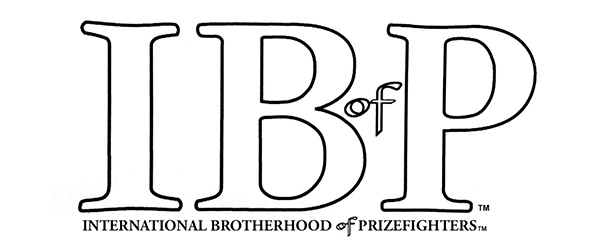Articles of 2009
FAT CITY AND FAT CITY: AN APPRECIATION

By almost any criterion imaginable, Leonard Gardner's FAT CITY is one of the two or three very best boxing novels ever written. That it rates among the Top Ten is pretty much beyond dispute.
The 1972 screen version is also considered a classic of the genre and would appear on almost any Top Ten list of boxing films, which makes it unique. Name another book that appears on both lists.
THE HARDER THEY FALL — maybe. It would be on both of mine, but it should also be noted that when Budd Schulberg, who had written the 1947 novel, reviewed the Hollywood version in 1956, he all but warned moviegoers to save their money, so dissatisfied was he with the liberties Tinseltown had taken with his book.
Leonard Gardner had no such reservations about John Huston's treatment of FAT CITY. The author in fact shared the screenwriting credit with the director, and it is to the latter's credit that so much of the book's original dialogue and storyline was preserved intact in the movie. One could make a reasonable case that FAT CITY was such a critical success as a film precisely because it so closely reflected the language and cadences of Gardner's book.
They have in a sense become inextricably intertwined. I couldn't tell you how many times I've re-read FAT CITY, but I can tell you that for the past 37 years it's impossible to get through that first chapter without starting to hum Kris Kristofferson's “Help Me Make It Through The Night,” which accompanies the hung-over Stacy Keach's shuffling introduction in the film.
FAT CITY is one of those films that has continued to grow in stature over the years, and on September 18, Film Forum in New York inaugurates a two-week run.
(EDITOR”S NOTE: The opening night 7:30 screening of FAT CITY was introduced by journalist/author/screenwriter Pete Hamill and TSS columnist George Kimball. See http://www.filmforum.org/films/fatcity.html for further information about the Film Forum retrospective.)
Leonard Gardner was a graduate student in creative writing at San Francisco State when he began the novel in the mid-1960s. He learned the lore of boxing from his father, a lifetime devotee of the sport, had fought as an amateur in his native Stockton, and spent considerable time in the same gyms frequented by the pugilistic dramatis personae — journeyman middleweight Billy Tully, welterweight prospect Ernie Munger, and Ruben Luna, the Hispanic gym owner who manages them both — of the book.
The book opens with Tully, a once-promising local star who had bottomed out once he hit national-level competition, plotting a comeback — for the worst of reasons, but one that could immediately be appreciated by anyone who's spent much time around professional boxers. Tully, who had retired from the ring because he wasn't confident that he had it any more, had surprised himself by knocking out a guy with one punch in a barroom fight the night before, which he immediately interpreted as a sign that perhaps he may have been precipitate in hanging up his gloves.
The novel took four years from beginning to completion. At one point it was twice the length of the compact, stripped-down (183 pages in the copy I'm looking at) version in which it was eventually published. Gardner had in the meantime published short stories in a number of literary magazines (including THE PARIS REVIEW, in 1965), and while his New York agent, Robert Lescher, encouraged the novel, he didn't push its author.
“I never showed [Lescher] any of the book until I felt it was ready,” recalled Gardner.
“I spent a lot of time cutting, editing, rewriting, polishing.”
The result was a book so utterly perfect that for forty years it has served as a source of discouragement to many a young writer. A dozen years ago the award-winning novelist and playwright Denis Johnson recalled his FAT CITY phase in an appreciation published in SALON:
“Between the ages of 19 and 25 I studied Leonard Gardner's book so closely that I began to fear I'd never be able to write anything but a pale imitation.” (Johnson's eventual solution was to ban FAT CITY from his house.)
Gardner recalls that despite his meticulous to the writing process, it never occurred to him that he might have just written a great book.
“I was pretty happy with it,” he said a few nights ago from his California home. “I thought it was a pretty good story, but the truth is, I spent all that time with it because I wanted to be sure it wasn't going to be rejected. I wanted it to be a book I was sure would be published.”
Lescher submitted the manuscript to a number of publishers, and in short order had achieved the result every writer dreams of: Two houses who each wanted it.
“In the end Lescher said he probably could have gotten a bit more money out of Random House, but he felt Farrar, Straus would be more committed in what it would do for the book,” said Gardner.
The 1969 critics were almost unanimous in hailing the book as a triumph, and before the year was out Gardner's novel had been nominated for a National Book Award, along with Kurt Vonnegut's SLAUGHTERHOUSE-FIVE and Joyce Carol Oates' THEM. (Oates won.) The Kansas City Star was moved to note that “probably there isn't a living novelist who, if he were honest with himself, would not be proud to have written FAT CITY. That's how good it is.”
Joan Didion wrote that “FAT CITY affected me more than any new fiction I have read in a long while.” Another female admirer wrote Gardner a letter telling him how much she had enjoyed the book, “but if it was any darker, I think I'd kill myself.”
David Milch, who taught creative writing at Yale before moving to Hollywood to create “NYPD Blue” and “Deadwood,” regularly made FAT CITY a staple of his writing classes. Forty years after FAT CITY's publication, Gardner was honored by the Boxing Writers Association of America with the A.J. Liebling Award, along with fellow recipients Larry Merchant and the late John Lardner.
The success of the book predictably brought Hollywood calling, and producer Ray Stark secured the film rights. It would be nice to say “and the rest is history,” but as is so often the case with these tangled tales of cinema, the journey from perfect book to perfect film appears to have been the result of a series of happy accidents.
FAT CITY in the hands of another director might have been a very different film. Stark had at one point hired Monte Hellman (TWO-LANE BLACKTOP), who eventually backed out of the deal for a more lucrative assignment. Mark Rydell (CINDERELLA LIBERTY) was offered the project, but wavered so long that Stark eventually turned to the 64 year-old Huston.
Besides maintaining his allegiance to Gardner's work in refusing to “go Hollywood” with the film, another Huston stamp on the movie came when he insisted, against the producer's wishes, on retaining cinematographer Conrad Hall's noir recreation of the interior skid-row barroom scenes. Stark felt the dark scenes would render the film unsuitable for drive-ins (not an insignificant consideration in 1972), wanted to fire Hall and re-shoot the scenes. Huston told the producer, in effect, “if he goes, I go.” If it was a bluff, it worked.
Now imagine FAT CITY with Marlon Brando with all that scar tissue above his eyes instead of Stacy Keach. Huston initially wanted Brando to play Tully, but interpreted his vacillation as a lack of interest, and when Brando wound up taking the eponymous role in THE GODFATHER, the director turned to the relatively unknown Keach.
Would Margot Kidder have delivered an Academy Award-nominated performance had she and not Susan Tyrell (who did earn a nomination) been cast as Oma, the philosophical barfly who takes up with Tully?
And one thing we know for sure. Had someone other than Huston been the director, we don't know who would have played Earl, Tully's rival for Oma's affections, but we can tell you with absolute certainty that it wouldn't have been Curtis Cokes.
Huston had been living in Ireland since 1964, and once he took on the project he invited Gardner to his estate in Galway. It was a pretty heady experience for the young writer.
“I'd already written a first draft of the screenplay, and what we did over there was go through it bit by bit,” recalled Gardner. “Huston spent most of his time painting, so he only wanted to address one scene per day. Sometimes I could rewrite a scene overnight, sometimes I couldn't, but we'd move on to the next one.”
Huston had boxed himself in his youth. His first published short story had a boxing tale called “Fool,” which H.L. Mencken published in his AMERICAN MERCURY in 1929. Though authenticity was important, Huston didn't define FAT CITY as a boxing movie at all.
“It's about life running down the sink without being able to pull the plug to stop it,” was the director's description.
“But his boxing background was reassuring to me,” recalled Gardner. “He knew the sport and he understood it. Particularly back then every time Hollywood got near boxing they seemed to turn to the same schlock clichés, but there was no danger of that with him.
“And just as he was an 'actors' director' because he gave his cast an extraordinarily free hand in interpreting scenes, I guess you could say he was a 'writer's director,' too. He knew what was good about the book and didn't want to screw it up by changing a lot of things.
“And I'd like to think that I have a pretty good cinematic sense myself,” added Gardner, who would later enjoy success writing for film and television (in a five-year run at NYPD BLUE). “I could visualize the way certain things would work on the screen, and he retained most of that — though I'm not so vain that I'd have argued for keeping something Huston didn't think would work once he'd explained it.”
Thirty-seven years on, the casting of FAT CITY seems a work of genius, but in 1972 it was very much a crapshoot. Keach had previously had featured roles in two films, both of which had essentially been cast out of the same New York saloon — the Lion's Head — over the previous year and a half: After starring (with James Earl Jones and Harris Yulin) in the film version of John Barth's END OF THE ROAD, he played Doc Holliday (to Yulin's Wyatt Earp and Faye Dunaway's Big-Nose Kate) in DOC, for which Pete Hamill wrote the screenplay. Young and relatively unfamiliar to film audiences (though not to viewers of SEA HUNT, where since the age of nine he had occasionally appeared with his father, Lloyd Bridges), both Jeff Bridges (Munger) and Susan Tyrell had recently appeared in what would also become cult films — Bridges in Larry McMurtry's THE LAST PICTURE SHOW, Tyrell in Richard Farina's BEEN DOWN SO LONG IT LOOKS LIKE UP TO ME.
Prior his portrayal of Ruben Luna in FAT CITY, Providence-born Nicolas Colasanto (who would become familiar as “Coach” on CHEERS) had played both cops and robbers in television bit roles, but his film resume was almost nonexistent. Candy Clark (Ernie's girlfriend/wife Faye) had never appeared in a movie before.
Neither, of course, had Curtis Cokes. Remarkably, in a film in which more than a dozen boxers and former boxers appear, the former welterweight champion played Earl, a character who isn't a fighter at all. Cokes, who had lost his welterweight title to Jose Napoles a few years earlier, had fought out of Texas for most of his career, but in 1971, nearing the end of the line, he had lost fights in San Francisco and Sacramento. We had always assumed that he must have stumbled into a casting call around this time, but the actual story is even more interesting.
“What happened is that Huston was back east for a fight in New York,” said Leonard Gardner. “He was sitting at ringside, and a well-dressed black gentleman a few seats away in the same section caught his eye. According to Huston, he was already thinking, 'This is what I want Earl to look like' before he even struck up a conversation. I'm sure he must still have had to go through the formality of an audition, but Huston claimed he'd actually decided he wanted this guy to play Earl before he even realized he was Curtis Cokes.”
Cokes fought three times in South Africa, winning two, in the year after FAT CITY came out. His first screen role also proved to be his last. He has been a successful trainer (Reggie Johnson, Kirk Johnson, Ike Ibeabuchi) back in Dallas for the past quarter-century.
In Gardner's book, Tully is a middleweight, Munger a welterweight, but for the movie it was more important that opponents approximate the sizes of Keach and Bridges, who were both light-heavyweights in 1972.
Argentine light-heavyweight Gregorio Peralta had been the first choice to play Arcadio Lucero, the fading former main-eventer brought to Stockton from Mexico as the opponent for Tully's comeback fight. In 1970 Peralta had fought George Foreman to a decision at Madison Square Garden, and both Gardner and Ray Stark were in the audience for their 1971 rematch at the Oakland Coliseum. Peralta was approached about the role, but his manager, who felt there was money yet to be made with Gregorio in the ring, didn't like the idea of putting his career on hold for several months.
The inspired choice of Sixto Rodriguez was Gardner's idea. The former California light-heavyweight champion, Rodriguez was by then retired, having finished with a record of 28-13-3. A useful boxer, Sixto had wins over Bobo Olson and Eddie Cotton, but the close of his career seemed to mirror that of Lucero's in the book: He had just six wins in his last 20 fights, most of them on the road.
Although he isn't given a lot of lines — just a few snippets, in Spanish, exchanged with his cornermen and an inspector in the dressing room — Rodriguez' haunting performance as the aging — and ailing — opponent is memorable one. He alights from the Greyhound bus with the cocksure walk of a matador, despite being hampered by a violent case of the runs. (In the movie the bodily function is somewhat altered; Lucero walks into the men's room and pisses blood. And this is before the fight.)
What must be attributed to a bit of prescient casting, Rosales, the opponent who breaks Ernie Munger's nose in his first amateur fight, was played by a 20 year-old Stockton amateur named Alvaro Lopez. So young that he's barely recognizable in the film, Yaqui Lopez engaged in the first of what would be 76 professional rights shortly after shooting wrapped up for FAT CITY. Lopez would go on to unsuccessfully challenge for the light-heavyweight championship on four occasions (vs. John Conteh, Matthew Saad Muhammad, and twice against Victor Galindez), and late in his career fought (against S.T. Gordon) for the cruiserweight title as well.
A couple of other, more familiar boxing types have roles in FAT CITY. Art Aragon, the original “Golden Boy,” works the corner with Colasanto as the trainer Babe. Aragon, who died two years ago, was one of the more popular fighters in Los Angeles history, and was Budd Schulberg's best man at the author's third wedding. (The old trainer Al Silvani is the referee in the Tully-Lucero bout.)
Both Aragon and Silvani appeared in many boxing movies, but a California club fighter (middleweight Billy Walker) won a speaking part as young Wes Haynes, a boxer in Ruben Luna's traveling entourage.
But in a very real sense, Stockton's legacy as a fight town makes it a co-star of FAT CITY as well. Resisting the temptation to shoot the film in more hospitable surroundings, Huston filmed it on location to capture the actual places, people, and milieu Gardner had so meticulously described in the book.
“Almost every extra you see in the film, from the entourages to the gym backdrops to the crowd scenes and what have you, came from the gyms and the boxing scene in Stockton,” said Leonard. ” The local promoter, Jack Cruz even gets several scenes.
“And of course a lot of the fighters back then would have moonlighted in the fields, just as Tully and Munger do together later in the book. Some of them worked as longshoremen, too.
That's right, longshoremen, as in ON THE WATERFRONT. Nearly a hundred miles inland from San Francisco Bay, Stockton is uniquely situated. Its geographic proximity to the rich farmlands of the San Joaquin Valley made it a haven for migrant workers — field hands both black and Chicano, scuffling Okies — and boxers. The River and a ship channel also conspired in the 19th century to make it one of California's two deep-water ports, and since the days of the Gold Rush ships bearing canned produce and lumber sailed from Stockton in such profusion that it was for a time the pirate capital of California.
“After the movie came out, I sent my mother on a cruise on a ship that sailed from Stockton to Europe,” said Gardner. “When I took her down to the ship I ran into a couple of ex-fighters who were working on the docks. The same two longshoreman had been in the film, where they played the guys working Lucero's corner when he fought Billy Tully.”
Gardner went on to high-profile journalistic assignments, covering Foreman-Norton in Caracas for Esquire, Ali-Chuvalo in Vancouver for Sport, and, Duran-Leonard in Montreal for Inside Sports. Gardner (b. 1933) also adapted his short story “Jesus Christ Has Returned to Earth” for the film “Valentino Returns,” and created nearly two dozen episodes of NYPD Blue, but his first novel turned out to be the only one he would write. Although he has dropped hints from time to time of another, forty years have elapsed since his masterpiece. From time to time you wonder whether looking back at FAT CITY had the same effect on its author it did on the young Denis Johnson.
Gardner, who gets asked about it a lot, has developed a stock response: “Sometimes,” he says, “you only get to win one championship.”
Articles of 2009
UFC 108 Rashad Evans vs. Thiago Silva

Former champion Rashad Evans meets Brazil’s venerable Thiago Silva in a non-title belt that can lead to a return match with the current champ, but first things first.
Evans (15-1-1) and Silva (14-1) meet in Ultimate Fighting Championship 108 in a light heavyweight bout on Saturday Jan. 2, at the MGM Grand Hotel and Casino in Las Vegas. A win by either fighter could result in a world title bid. The fight card is being shown on pay-per-view television.
Events can change quickly in the Octagon and anybody can beat anybody in the 205-pound weight division. Just ask Silva or Evans.
Silva and Evans are both experienced and can vouch firsthand about the capriciousness of fighting in MMA and especially as a light heavyweight. On one day this man can beat that man and on another day, that man can beat this man. It can make you absolutely daffy.
Evans, 30, is the former UFC light heavyweight world champion who only defended his title on one occasion and lost by vicious knockout to current champion Lyoto Machida of Brazil. It’s the only defeat on his record.
Silva, 27, is a well-rounded MMA fighter from Sao Paolo, Brazil who is versed in jujitsu, Muy Thai and boxing. He can end a fight quickly in a choke hold just as easily as with a kick or a punch. His only loss came to who else: Machida.
Evans and Silva know a win can push open the door to a rematch with current UFC light heavyweight champion Machida.
“A win against Rashad would put me in the track against Lyoto,” said Silva, in a telephone conference call. “That's what – what I want to do.”
When Silva fought Machida the two Brazilians were both undefeated and feared in the MMA world. The fight took place in Las Vegas and with one second remaining in the first round a perfectly timed punch knocked Silva unconscious.
“I was humbled big time, man,” says Silva who fought Machida in January 2009. “I learned a lot from that fight. I think I can correct the mistakes from that fight, not overlooking anything else right now, but just I want to get the chance to fight him again.”
For Evans it was a different circumstance. The upstate New Yorker held the UFC title and was defending it after stopping then champion Forrest Griffin by knockout. Still, many felt Machida was far too technically versed. Evans was stopped brutally in the second round.
“I've made it a point to not – to not get distracted on what I want to do, because you know Thiago (Silva) is a very hungry fighter,” said Evans who has not fought since losing the title to Machida last May. “My focus is just on Thiago so much. You know I don't want to overlook him, you know, not even a little bit.”
Dana White, president of UFC, says the winner of this fight could conceivably fight Machida in the near future. Evans and especially Silva are motivated by the open window.
“I learned a lot from that fight. I think I can correct the mistakes from that fight,” says Silva. “Not overlooking anything else right now, but I just want to get the chance to fight him again.”
What a prize. The winner gets to face the man who beat him: Machida.
Articles of 2009
A Very Special New Year's Day Column

It has been just over four months since Nick Charles, the play-by-play announcer for Shobox: The New Generation, was diagnosed with stage IV bladder cancer and forced to take a medical hiatus from the monthly show that has aired since 2001.
Since then he has undergone grueling chemotherapy treatments that have resulted in him losing all of his hair as he forces himself to live as normal of a life as possible. Through sheer force of will, as well as the strength and support that he receives from his wonderfully loving family and his strong Christian faith, the 63-year-old Charles has managed to keep his weight up while not falling prey to the always lingering threats of depression, cynicism and negativity.
If one was unaware that he was battling such an insidious disease, you’d never know from talking on the phone to him that he has been to hell and back. He has lost none of the inspiring energy that has endeared him to members of the boxing community and legions of worldwide viewers.
“I’m doing great,” Charles said during a telephone conversation on December 30th. “I’ve been off the chemo for a month, and the doctors have told me that I’m 80 percent in remission. I’m going to see them again in three months. It may come back, but if it takes one year, or two years, or however long, I’m going to make the most of the good time.”
As physically and emotionally wrenching as the grim diagnosis and subsequent treatment has been, even for someone as perpetually positive as Charles, the longtime announcer said a lot of good things have come from it.
Having been married three times, Charles is the father of four children: Jason, 38, Melissa, 34, Charlotte, 22, and Giovanna, 3 ½.
While Charles is not big on regrets, he is the first to admit that he wasn’t always there for his older children. For many years he traveled the world as a CNN correspondent, often putting the demands of his career above all else, including those closest to him. Nowhere was the strain more evident than in his relationship with Melissa.
Having been divorced from Melissa’s mother since 1977, Charles said his relationship with that daughter has been especially “hot and cold, all of our lives.”
His illness has enabled them to forge a relationship that has been “based on a massive amount of forgiveness and understanding.”
“This has had a tremendous healing effect on both of us,” said Charles. “My illness has had a fortifying effect on a lot of things, the most important of which is my relationships with my family.”
That also includes his first wife, with whom he has had an often acrimonious relationship over the past three decades.
“It took a long time for the scab to become a scar, but we had lunch one day and it was so great to once again see the gentle, soft sides of each other,” he explained. “The whole divorce process creates a hardness that doesn’t always go away.”
Charles is also the grandfather to three children, some of whom are about the same age as his youngest daughter. He jokes that he has a “nuclear 21st century family” because of the similar ages of two generations of children. One of the hardest things for him has been the realization that he can’t always play with them in manner in which he would like.
“The hemoglobin is the fuel in your tank, so when it’s low you can’t will yourself to do things no matter how much you want to,” said Charles. “You can’t just sleep it off or work through it. I don’t want the kids to wonder why I can’t play in the backyard with them, or kick a soccer ball, or throw them in the air.”
Particularly difficult is when Giovanna reminds her father of how handsome he is, but then innocently asks him what happened to his hair, eyebrows and lashes.
“You try to keep things on a need to know basis, which is not easy when dealing with curious kids,” said Charles.
While Charles might look like the kind of guy that things have often come easy to, the reality is that his beginnings were far from auspicious. But, he says, his often challenging Chicago childhood blessed him with the steely resolve that has helped him so much during the arduous journey he is now on.
“I had it pretty rough growing up,” he explained. “I remember the lights and the heat being shut off and eating mustard sandwiches. I went to work at 13 and always had insecurities about the future. But I always expected and saw the best in people, so when I got sick, never once did I say 'Why me?”
Since taking a leave of absence from Shobox, the outpouring of support from the boxing community has warmed Charles’s heart. For a guy that is battling for his life, he actually considers himself fortunate to be surrounded by so much goodness in both his personal and professional lives.
“I always hear that boxing people are ruthless, but I couldn’t disagree more,” said Charles. “I’ve probably received about 1,000 e-mails, and people are always following in sending their best wishes. From the relatively unknown people in boxing to many of the more famous people, there has been an outpouring of true affection.”
Charles said that the Top Rank organization has been exceedingly kind and gracious. He was touched beyond description when he learned that officials in Oklahoma got special permission to have a seamstress sew “Keep Fighting Nick” onto their sleeves. He chokes up when talking about cut man Stitch Duran giving up an endorsement opportunity so he could put Charles’s name on his outfit. He never tires of hearing shout-outs from fighters on television.
Charles has always been a people person with an inordinate faith in the goodness of his fellow man. Battling this illness has only made his already strong faith in humanity even stronger.
“Adversity is a great teacher, and it really teaches you who your genuine friends are,” said Charles. “I have a lot of friends.”
He also has a remarkable wife, Cory, a CNN producer to whom he has been married for 11 years. She is the daughter of an electrician, a self-made woman who exudes all of the warmth of her native Brooklyn. She has reinforced her husband’s spiritual base by her love, optimism and strength of character.
“If I get down, she reminds me to not get too caught up,” said Charles. “I believe in eternity, and that has put me pretty much at peace.”
More than anything else, Charles wants to get himself back behind a microphone sooner rather than later, and hopefully on Shobox. He is the first to admit that viewers “don’t watch the series to see Nick Charles,” but he is proud of the fact that he was “part of the identity” of such a popular show.
“And people love comeback stories,” added Charles. “That’s the message I’m getting from the people out there.”
In boxing the word “champion” is often overused because it pertains only to winning belts and receiving worldwide recognition for being the best at your craft. The reality is that life’s real champions have other qualities, such as the innate ability to treat people well and always make them feel better about themselves, especially when the recipients of the goodwill are in no position to give them anything back.
By that standard of measure, Charles is as much, if not more of a champion than all of the boxers he has covered during the nine years that Shobox has been on the air.
I know I speak for scores of others when I say, “Happy New Year, Champ. We hope that you are the comeback story of the year in 2010.”
Articles of 2009
No One Is Leaving This Stage Of Negotiations Looking GOLDEN

Early in his political career, the young Lyndon Baines Johnson served as a congressional aide to Rep. Richard Kleberg, the wealthy owner of the King Ranch who was elected to seven consecutive terms in the House of Representatives, at least in part because he often ran unopposed.
One year an upstart rival politician we'll call Joe Bob had the temerity to challenge Kleberg in the Democratic primary, resulting in the convocation of the Texas congressman's staff to plot an election strategy. Several ideas were kicked around before Kleberg himself came up with a brainstorm.
“Why don't we start a rumor that he [copulates with] sheep?” proposed the politician.
This was a bit over the top, even for Lyndon Johnson. The future president leapt to his feet and said, incredulously, “But you know Joe Bob don't [copulate with] sheep!”
“Yeah,” replied the congressman, “but watch what happens when the son of a bitch has to stand up and deny it!”
******
Events of the past week or two have seen the Floyd Mayweather camp adopt a similar tactic with regard to Manny Pacquiao. But if introducing what would appear to be a red-herring issue — the debate over drug-testing procedures — to the negotiating process was intended as a negotiating ploy, it would appear for the moment to have backfired. The idea might have been to force Pacquiao to go on the defensive, but Pac-Man instead responded with his stock in trade, the counterpunch — in this case the multi-million dollar defamation suit he filed against the Mayweathers, pere et fils,, with the U.S. District Court in Las Vegas on Wednesday.
In boxing even more than in life, you never say never, but you'd have to say that Pacquiao-Mayweather is a dead issue right now, at least in its March 13 incarnation. Bob Arum says Pacquiao is prepared to move along to another opponent, and Mayweather is supposedly looking at Matthew Hatton in England.
We'll believe that when we see it, for at least three reasons: (1) There would hardly seem to be enough money in that one to make it worth Floyd's time, (2) He's going to have to put so much into preparing a defense to this lawsuit that he mightn't have time to train and (3) He'd get a better workout if he stayed in Vegas and boxed one of Uncle Roger's girl opponents.
*****
Colleagues on this site have already done a good job of dissecting this process. Ron Borges is absolutely correct in noting that in the midst of all the posturing that's gone on, you'd be a fool to accept at face value anything coming out of any of the parties' mouths. And Frank Lotierzo is spot on in noting that if you had absolutely no desire to actually get in the ring with Manny Pacquiao but were still looking to save face, you'd do pretty much exactly what Mayweather has done. Which is to say, talk tough while you get others to run interference with a series of actions seemingly calculated to ensure that the fight doesn't come off.
But left almost unscathed in all of this heretofore has been the convoluted role played by Golden Boy — by CEO Richard Schaefer, by the company's namesake Oscar the Blogger, GBP's subsidiary enterprise, The Ring, and at least a few of the lap-dogs and lackeys whose favor GPB has cultivated elsewhere in the media.
In late March of 2008, Shane Mosley and Zab Judah appeared at a New York press conference to announce a fight between them in Las Vegas two months later. As it happened, the BALCO trial had gotten underway out in California that week. That day I sat with Judah and his attorney Richard Shinefield as they explained that they intended to ask that both boxers agree to blood testing in the runup to the fight. Citing Mosley's history with BALCO and its products The Cream and The Clear (which Shane claimed Victor Conte had slipped him when he wasn't looking), Shinefield and Zab, noting that Nevada drug tests were limited to urinalysis, proposed that the supplementary tests be administered by the World Anti-Doping Agency.
Want to know what Richard Schaefer's response to that was?
“Whatever tests [the NSAC] wants them to take, we will submit to, but we are not going to do other tests than the Nevada commission requires,” said Schaefer. “The fact is, Shane is not a cheater and he does not need to be treated like one.”
But the fact is that Mosley had a confirmed history as a cheater. Manny Pacquiao does not. Yet in the absence of a scintilla of evidence or probable cause, less than two years later Schaefer was howling that the very integrity of the sport would be at risk unless Pacquiao submitted to precisely the same sort of testing he had rejected for Mosley.
And you thought it was Arum who was famous for saying “Yeah, but yesterday I was lying. Today I'm telling the truth!”
Schaefer, by the way, defended his 180-degree turnabout by saying he is now better educated on the issue. He couldn't resist aiming a harpoon at the media by adding that many sportswriters “don't know the difference between blood and urine testing.”
Don't know how to break this to you, Richard, but sportswriters, who have had to deal with this stuff for the past twenty years, probably know more about drug-testing procedures than any other group you could name.
*****
Now, the reasonable assumption would be that by assuming the role of the point man in this unseemly mess, Schaefer was insulating his boss (De La Hoya) and his fighter (PBF) by keeping their fingerprints off it while he made a fool of himself publicly conducting this snide little campaign.
And yes, Money would have stayed out of the line of fire had not a two-month old, expletive-filled rant in which he described the Philippines as the world's foremost producer of performance-enhancing drugs not exploded on the internet at the most inopportune moment. That the lawsuit was filed less than 24 hours after “Floyd Meets the Rugged Man” overtook the Tiger Watch probably wasn't a coincidence.
And we're assuming that this Dan Petrocelli, the lawyer who filed Pacquiao's suit, knows what he's doing, because if there were an even one-zillionth chance that somebody could credibly link Manny to PEDs, then it was a pretty dumb thing to do. You could ask Roger Clemens about that. Clemens' transformation from Hall of Famer-in-waiting to nationwide laughingstock didn't come from the Mitchell Report. It came from his wrongheaded decision to file a lawsuit against Brian McNamee, which in turn threw everything open to the discovery process.
*****
De La Hoya, in the meantime, was playing both sides of the fence. He let Schaefer play Bad Cop as he distanced himself from the negotiating process, but simultaneously was sniping away at Pacquiao from his First Amendment-protected perch as a Ring.com blogger.
“If Pacquiao, the toughest guy on the planet, is afraid of needles and having a few tablespoons of blood drawn from his system, then something is wrong… I'm just saying that now people have to wonder: 'Why doesn't he want to do this?' Why is [blood testing] such a big deal?' wrote Oscar the Blogger. “A lot of eyebrows have been raised. And this is not good.”
Ask yourself this: Exactly what caused those eyebrows to be raised, other than the innuendo coming straight from Oscar's company?
Providing De La Hoya with a forum from which to dispense propaganda only begins to illustrate the hopelessly compromised position from which The Ring continues to operate. They might as well give Schaefer a column, too, while they're at it.
Nearly seven months have elapsed since we last visited the Ring/Golden Boy relationship, and at the risk of winding Nigel up, it might be useful here to note that in the midst of last June's discourse, The Ring's editor offered a laundry list of the magazine's covers since the De La Hoya takeover as a demonstration of Golden Boy's restraint.
After listing them, Nigel Collins wrote “that's 28 covers over the course of 21 issues, of which Top Rank had 12 fighters, as opposed to eight for Golden Boy and eight for other promotional entities. Obviously, The Ring has shown no bias to Golden Boy when it comes to magazine covers.”
It had never even been suggested that the conflict of interest extended to the magazine playing favorites in choosing its cover subjects, but since Nigel brought it up it is probably worth noting now that of those eight covers given over to “other promotional entities,” two were of David Haye, whose promoter was properly listed as “Hayemaker,” but who had also signed a promotional deal with Golden Boy in May of 2008. (Just last month GBP issued a release in De La Hoya's name in which it described itself as “Golden Boy Promotions, the United States promoter of World Boxing Association Heavyweight World Champion David Haye.”)
And even more to the point, in four other issues Nigel Collins offered in evidence the cover subject was Floyd Mayweather (Independent), although what has transpired with regard to the Pacquiao fight doesn't make Money look very independent at all, does it?
We don't regularly keep track of these things, but in making sure we didn't misquote Oscar's Blog we also came across a representation of the January 2010 issue on The Ring's website. The picture on the cover of the Bible of Boxing is of the Golden Boy himself, and the cover story “De La Hoya: The Retirement Interview.”
Wow! Now there's a hot topic for crusading journalists.
-
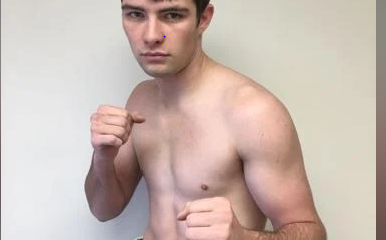
 Featured Articles7 days ago
Featured Articles7 days agoIn a Massive Upset, Dakota Linger TKOs Kurt Scoby on a Friday Night in Atlanta
-
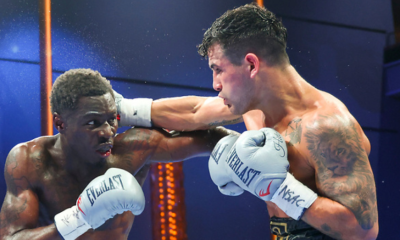
 Featured Articles3 weeks ago
Featured Articles3 weeks agoHitchins Controversially Upends Lemos on a Matchroom Card at the Fontainebleau
-
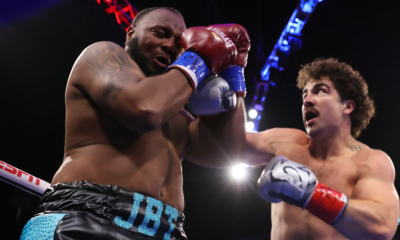
 Featured Articles4 weeks ago
Featured Articles4 weeks agoUndercard Results from Arizona where Richard Torrez Jr Scored Another Fast KO
-
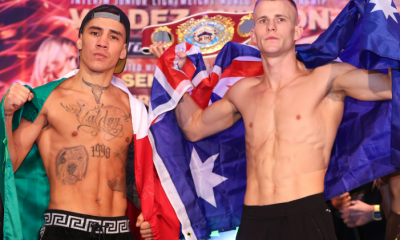
 Featured Articles4 weeks ago
Featured Articles4 weeks agoAvila Perspective, Chap. 278: Clashes of Spring in Phoenix, Las Vegas, and LA
-
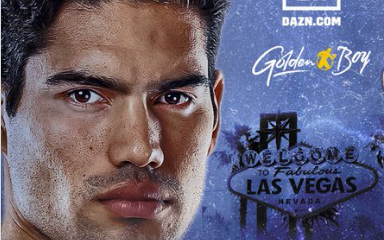
 Featured Articles4 weeks ago
Featured Articles4 weeks agoZurdo Ramirez Accomplishes Another First; Unseats Cruiser Titlist Goulamirian
-

 Featured Articles3 weeks ago
Featured Articles3 weeks agoAvila Perspective, Chap. 280: Oscar Valdez, One of Boxing’s Good Guys, and More
-
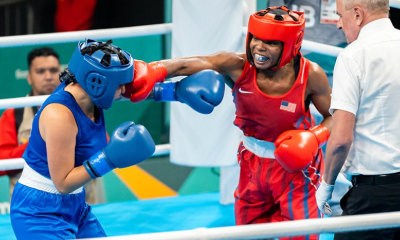
 Featured Articles3 weeks ago
Featured Articles3 weeks agoThe Hauser Report: Literary Notes and More
-
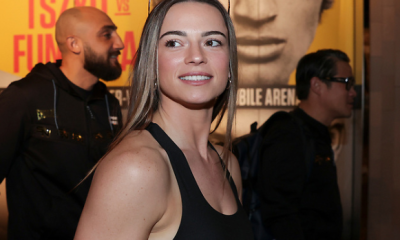
 Featured Articles3 weeks ago
Featured Articles3 weeks agoThe Sky is the Limit for Globetrotting Aussie Featherweight Skye Nicolson

